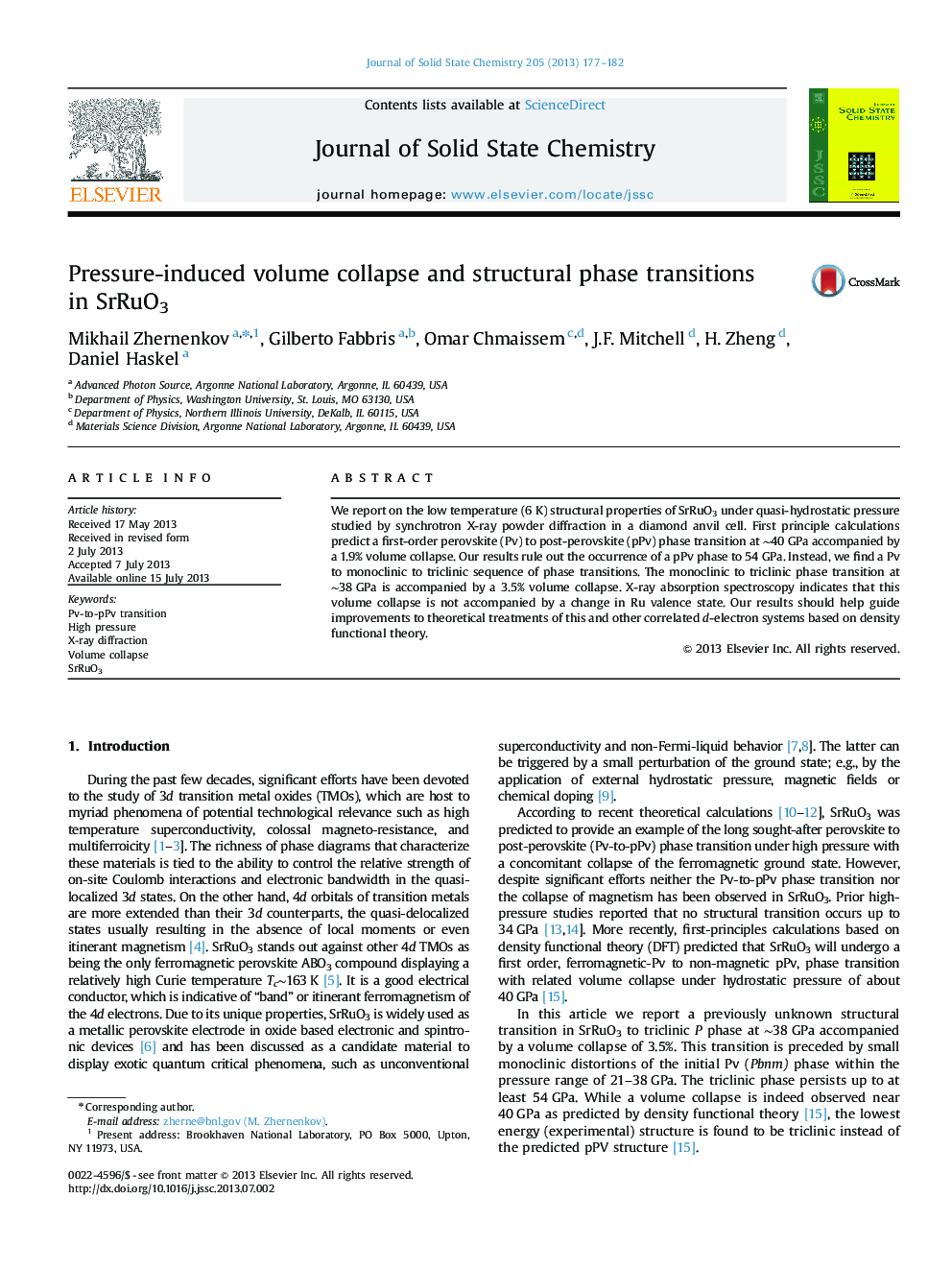| Article ID | Journal | Published Year | Pages | File Type |
|---|---|---|---|---|
| 1330582 | Journal of Solid State Chemistry | 2013 | 6 Pages |
•Crystal structure of SrRuO3 was studied under high pressure up to 54 GPa.•Pv to monoclinic to triclinic sequence of phase transitions was observed.•Transition to triclinic phase at ∼38 GPa is accompanied by a 3.5% volume collapse.•Volume collapse in SrRuO3 is not driven by a change in Ru valence state.•Pv-to-pPv phase transition predicted by DFT at 40 Gpa is not observed up to 54 GPa.
We report on the low temperature (6 K) structural properties of SrRuO3 under quasi-hydrostatic pressure studied by synchrotron X-ray powder diffraction in a diamond anvil cell. First principle calculations predict a first-order perovskite (Pv) to post-perovskite (pPv) phase transition at ∼40 GPa accompanied by a 1.9% volume collapse. Our results rule out the occurrence of a pPv phase to 54 GPa. Instead, we find a Pv to monoclinic to triclinic sequence of phase transitions. The monoclinic to triclinic phase transition at ∼38 GPa is accompanied by a 3.5% volume collapse. X-ray absorption spectroscopy indicates that this volume collapse is not accompanied by a change in Ru valence state. Our results should help guide improvements to theoretical treatments of this and other correlated d-electron systems based on density functional theory.
Graphical abstractUnit cell volume as a function of pressure (T=6 K). Black squares and red circles correspond to Ne and He pressure media, respectively. Blue dashed lines are fit to the data before the volume collapse using a second-order Birch–Murnaghan equation of state excluding (lower curve) and including (upper curve) neutron diffraction data for the low temperature, ambient pressure volume. Dashed lines denote structural phase boundaries.Figure optionsDownload full-size imageDownload as PowerPoint slide
